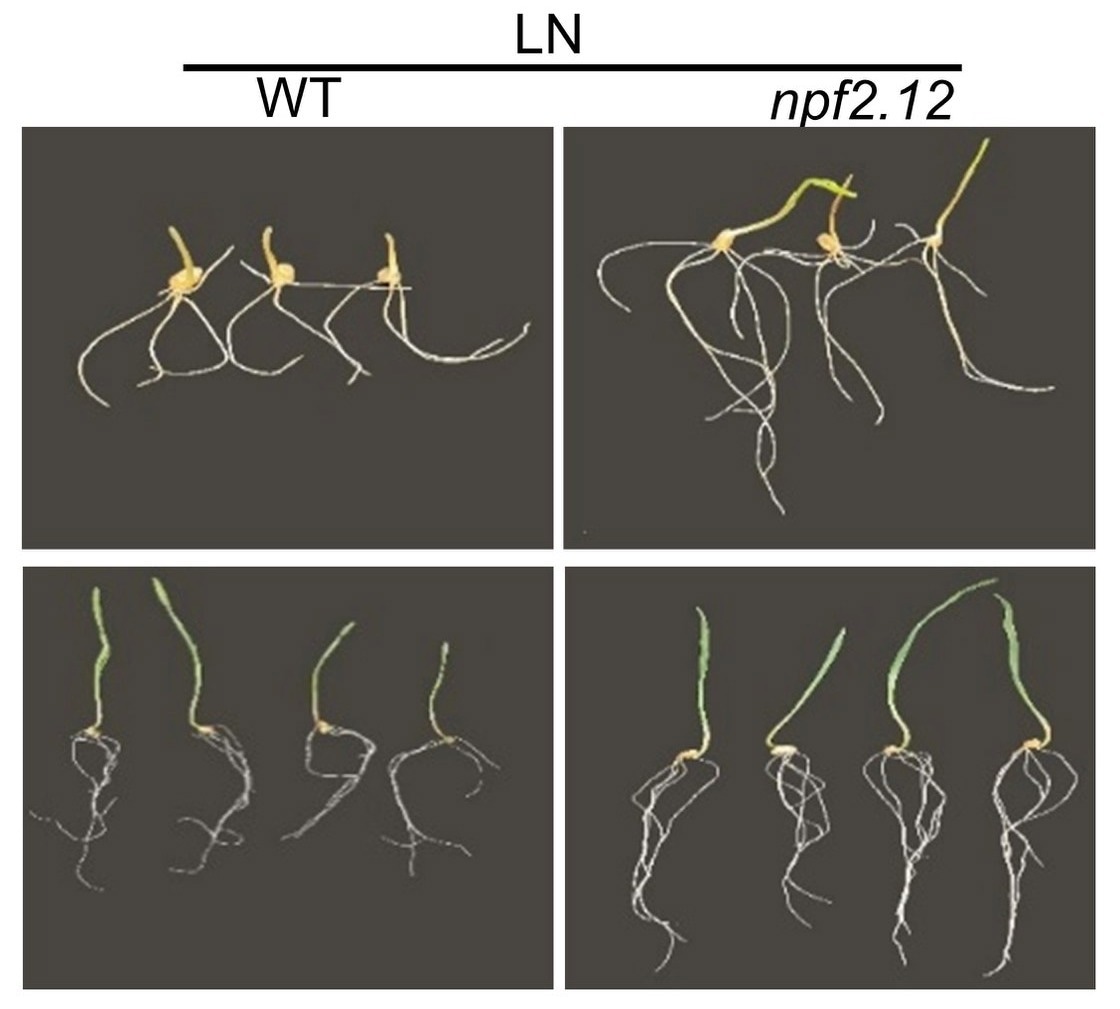Nitrogen as a fertilizer can boost yields. Too much nitrogen, on the other hand, can have negative consequences such as high energy consumption in fertilizer manufacturing, groundwater pollution, and the production of climate-relevant gases. As a result, scientists are looking for strategies to help crops survive with less nitrogen.
 Wheat varieties with a specific NPF2.12 gene variant (right) - have significantly better root growth at low nitrogen levels in the soil than varieties without this gene variant (left). Image Credit: Md. Nurealam Siddiqui
Wheat varieties with a specific NPF2.12 gene variant (right) - have significantly better root growth at low nitrogen levels in the soil than varieties without this gene variant (left). Image Credit: Md. Nurealam Siddiqui
The University of Bonn identified gene variants of the nitrate sensor NPF2.12 that initiate a signal cascade chain when soil nitrogen levels are low. This stimulates root growth, which improves nitrogen utilization. The findings were published in the New Phytologist journal.
We studied a large number of wheat and barley genotypes under different nitrogen supply conditions and analyzed their root architecture and nitrogen accumulation in the plants.”
Md. Nurealam Sidiqqui, Study Lead Author, Plant Breeding Group, Institute of Crop Science and Resource Conservation, University of Bonn
The researchers examined over 220 distinct wheat and barley types developed over the last half-century of plant breeding. “The wheat varieties studied were selected to cover the breeding history over the last 60 years,” details Prof. Dr Jens Léon of INRES Plant Breeding.
The researchers tested these different varieties on trial plots with high nitrogen levels and, for comparison, on plots with minimal nitrogen application at the University of Bonn’s agricultural research campus Klein-Altendorf.
Prof. Léon added that the team next studied, among other things, root features characteristics and the nitrogen content of leaves and grains of each variety, and did a genome-wide genetic analysis to uncover correlations between DNA sequences and the relevant properties.
More roots take up more nitrogen from the soil
NPF2.12 was discovered by the researchers during the investigation. When soil nitrogen availability was low, certain variants of this gene allowed plants to produce bigger root systems.
It is likely that the gene, or rather the protein it encodes, acts as a sensor that needs to be switched off when nitrogen levels in the soil are low in order to indirectly increase the messenger nitric oxide as part of a signaling cascade, which in turn induces root growth, thereby improving nitrogen utilization.”
Dr Agim Ballvora, Study Corresponding Author, Institute of Crop Science and Resource Conservation
“Under low nitrogen conditions and in the presence of certain variants of the NPF2.12 gene, increased nitrogen content in leaves and grains is detectable compared to high nitrogen availability,” adds Ballvora, who also partners with the PhenoRob Cluster of Excellence at the University of Bonn. As a result, under adverse conditions, these varieties outperform those with the alternative allele, stresses Siddiqui.
Variants of the NPF2.12 nitrate sensor help with nitrogen utilization
The investigators were able to show that NPF2.12 is actually responsible for enhanced performance in both the laboratory and the greenhouse. Wheat plants having a defect in the NPF2.12 gene were studied. When nitrogen was scarce, the corresponding lines with the defective npf2.12 allele behaved like cultivars that naturally had the beneficial gene variant.
These results show that NPF2.12 is a negative regulator, whose reduced expression in corresponding cultivars results in more root growth and higher nitrogen content in the shoot through a sophisticated mechanism.”
Dr Gabriel Schaaf, Professor and Member, PhenoRob Cluster of Excellence, INRES Plant Nutrition
The discovery falls under the purview of fundamental science, but it also opens up new avenues for plant breeding. “Improved understanding of the genetic and molecular function of nitrogen sensing will accelerate the breeding of varieties with improved nitrogen use efficiency,” Ballvora says, looking to the future.
However, this would necessitate a better understanding of the specific processes in the NPF2.12 sensor’s signal cascade that result in stronger root growth under nitrogen deprivation.
Source:
Journal reference:
Siddiqui, Md. N., et al. (2023). Convergently selected NPF2.12 coordinates root growth and nitrogen use efficiency in wheat and barley. New Phytologist. doi.org/10.1111/nph.18820.